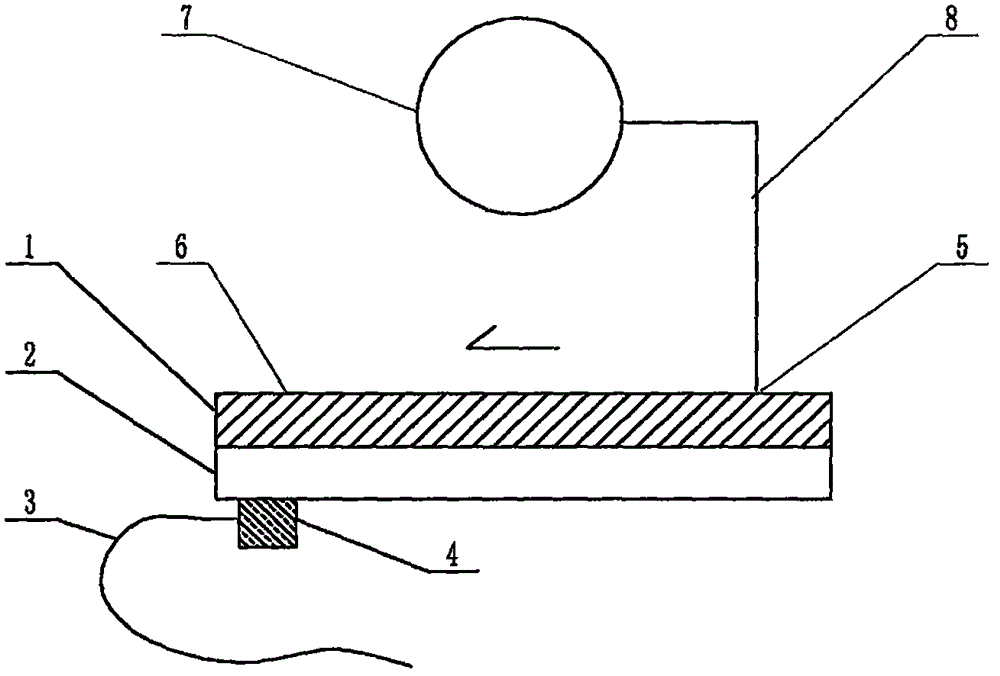Dual mode coupling driven micro-fluidic chip device aiming at hydrophobic substrate materials
A microfluidic chip, coupled drive technology, applied in the field of analysis and testing, can solve problems such as troublesome operation, large flow resistance, and distortion of the inner surface modification of PDMS microchannels
- Summary
- Abstract
- Description
- Claims
- Application Information
AI Technical Summary
Problems solved by technology
Method used
Image
Examples
Embodiment Construction
[0037] exist figure 1In the shown embodiment of the present case, the structure of the device includes a microfluidic chip, and the structure of the microfluidic chip includes a substrate 1 and a cover sheet 2 that are attached to each other. The sampling end 5 of the sample liquid flow is far away from the terminal 6 of the sample liquid flow, and the distance between the sampling end 5 and the terminal 6 is between 3 cm and 10 cm. The point is that the substrate 1 Its material is polydimethylsiloxane material, and the surface of the substrate 1 is the surface of the original form, and the surface of the original form refers to the material without any surface chemical modification or any surface chemical modification. The surface of the original form, the structure of the device also includes a micro-ultrasonic transducer 4, and a high-frequency oscillating electrical signal transmission cable 3, one end of the high-frequency oscillating electrical signal transmission cable ...
PUM
| Property | Measurement | Unit |
|---|---|---|
| thickness | aaaaa | aaaaa |
| length | aaaaa | aaaaa |
Abstract
Description
Claims
Application Information
 Login to View More
Login to View More - R&D
- Intellectual Property
- Life Sciences
- Materials
- Tech Scout
- Unparalleled Data Quality
- Higher Quality Content
- 60% Fewer Hallucinations
Browse by: Latest US Patents, China's latest patents, Technical Efficacy Thesaurus, Application Domain, Technology Topic, Popular Technical Reports.
© 2025 PatSnap. All rights reserved.Legal|Privacy policy|Modern Slavery Act Transparency Statement|Sitemap|About US| Contact US: help@patsnap.com

